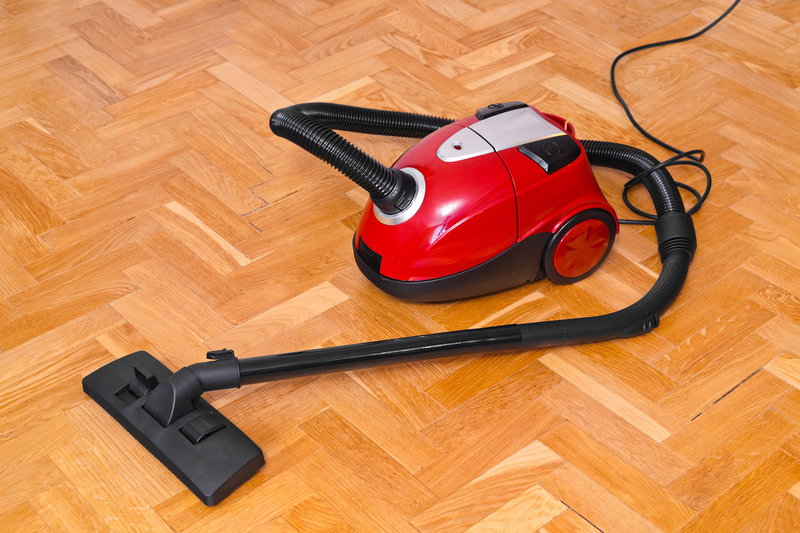Expert Tips for Gently Cleaning Velvet Curtains at Home
Posted on 01/06/2025
Expert Tips for Gently Cleaning Velvet Curtains at Home
Velvet curtains lend an air of luxury, elegance, and warmth to any room, but their sumptuous texture also means they require special care. If you're looking to refresh your living space and maintain the beauty of your drapes, knowing how to clean velvet curtains gently at home is essential. In this comprehensive guide, discover proven methods, expert advice, common mistakes to avoid, and handy maintenance tips for keeping your velvet curtains looking pristine for years to come.
Why Velvet Curtains Need Special Attention
Velvet fabric is more delicate than many standard curtain materials. The signature plush pile gives them their trademark softness and rich appearance but also makes them susceptible to:
- Crushing
- Water stains
- Fading
- Lint and dust accumulation
Improper cleaning methods can ruin the delicate nap and diminish their appearance. That's why it's vital to understand how to gently clean velvet curtains at home.

Types of Velvet Curtains and Cleaning Guidelines
Before you begin any cleaning process, it helps to identify the specific type of velvet you're working with. Common types include:
- Cotton velvet: Traditional and more robust, but still requires careful handling.
- Synthetic velvet: Often made from polyester or nylon. More resistant to water but prone to static and lint.
- Silk velvet: Extremely delicate; dry-cleaning is almost always recommended.
- Crushed velvet: Distinctive crumpled appearance and sometimes more forgiving.
Always check the care label before cleaning. If the label indicates "dry clean only," do not attempt to wash the curtains at home.
Routine Maintenance: Keeping Velvet Curtains Clean Between Washes
1. Regular Dusting
- Vacuum with an upholstery attachment: Use a soft brush head to gently vacuum curtains from top to bottom. This removes dust and prevents debris from embedding in the fibers.
- Soft brushing: Use a dry, soft-bristled brush in the direction of the nap to keep the velvet pile smooth and dust-free.
2. Spot Cleaning for Stains
If you notice a fresh spot or spill, immediate action is crucial:
- Blot, don't rub: Use a clean, absorbent cloth or paper towel to blot the stain gently. Rubbing can crush the pile and spread the stain.
- Mild cleaning solution: Mix a small amount of gentle detergent with cold water. Dampen (do not soak) a cloth with the solution and blot the stain.
- Rinse: Dampen another cloth with cold water and blot again to remove any soapy residue.
- Dry: Let air dry completely. Avoid direct sunlight or heat sources, which can damage the fabric.
How to Gently Clean Velvet Curtains at Home: Step-by-Step Guide
Step 1: Preparation
- Read care labels thoroughly for manufacturer instructions.
- Test any cleaning solution on a hidden area before proceeding to check for colorfastness.
- Gather supplies: lint roller, soft brush, microfibre cloths, gentle detergent, vacuum with upholstery attachment.
Step 2: Dust and Lint Removal
Begin by removing dust and lint from your velvet curtains:
- Vacuum: Gently vacuum along the length of the curtain using an upholstery brush attachment. This minimizes disturbance to the fabric's nap.
- Lint roller: For stubborn lint or pet hair, gently run a lint roller over the surface.
Step 3: Spot Clean Stains
- Blot liquid spills quickly with a paper towel. Do not rub.
- For greasy or stubborn stains, use a small amount of dish soap mixed with cold water. Apply to a microfibre cloth and gently blot the area.
- Work on the back side of the curtain wherever possible to avoid distorting the visible surface.
Step 4: Hand Washing (if the label permits)
If your velvet curtains are washable:
- Remove the curtains from rods and shake them outside to dislodge any loose debris.
- Fill a large tub or sink with cold water and add a gentle, mild detergent. Avoid harsh or bleach-based cleaners.
- Fully submerge the curtains and gently agitate the water with your hands--do not scrub or wring.
- Soak for 2-5 minutes only. Over-soaking can distort the fabric.
- Drain the soapy water and refill with clean, cold water. Swish the curtains around gently to rinse.
Step 5: Drying Velvet Curtains
Proper drying is crucial to maintaining the nap and shape:
- Press out excess water gently by rolling curtains in a thick towel. Never wring or twist velvet.
- Lay flat on a clean, dry towel (preferably on a flat surface) and reshape if necessary.
- Let air dry at room temperature--avoid direct sunlight and heaters which can cause fading and shrinkage.
- Hang the curtains back up while still slightly damp to help smooth out wrinkles and restore drape.
Step 6: Steam Refreshing
Once dry, use a hand-held steamer or the steam setting of your iron (without direct contact):
- Steam vertically: Hang the curtains and pass the steamer in downward strokes. Do not touch the velvet with the device directly.
- Fluff the pile: Once cool, lightly brush in the direction of the nap with a soft-bristled brush to restore softness and sheen.
Professional Cleaning vs. At-Home Methods
While gentle home cleaning of velvet curtains works for minor stains and regular upkeep, some situations call for professional help:
- Silk or antique velvet curtains
- Deep-seated stains or pervasive odors
- Large, unwieldy drapes that can't be handled at home
Professional dry cleaners have the expertise and equipment to handle delicate fabric safely.
Common Mistakes to Avoid When Cleaning Velvet Curtains
- Using hot water: This can shrink or distort velvet.
- Scrubbing stains: Always blot, never rub or scrub, to prevent damaging the pile.
- Wringing the fabric: This causes permanent creases and flattening.
- Exposing to direct heat: Accelerates fading and weakens fibers.
- Ignoring regular maintenance: Waiting for visible stains allows dirt and dust to build up, making cleaning harder.
Tips for Keeping Velvet Curtains Fresh Longer
- Use a dehumidifier: Reduces moisture that could lead to mildew.
- Draw back curtains during the day: Limiting sun exposure prevents color fading.
- Clean windows: Prevents dirt and condensation from transferring onto the fabric.
- Rotate curtains (if possible): Even out exposure to light and environmental factors.
- Store properly: When not in use, fold loosely and cover in a breathable garment bag in a dry area.
FAQ: Gently Cleaning Velvet Curtains at Home
Can I machine wash velvet curtains?
Generally no--most velvet curtains will be damaged by agitation in a washing machine. Always check the label. If machine washing is permitted, use a delicate cycle in cold water and a mesh laundry bag.
Is it safe to use a fabric cleaner spray?
Test on a hidden area first. Most sprays are not recommended unless specifically formulated for velvet. Water-based stains should be blotted, not sprayed.
How often should I clean velvet curtains?
Vacuum or brush weekly for dust removal and deep clean every 1-2 years unless otherwise stained or soiled.
My velvet curtains are wrinkled after washing. What should I do?
Hang them up while still slightly damp, and use a hand-held steamer to gently remove wrinkles. Avoid direct ironing.

The Bottom Line: Velvet Curtain Cleaning Made Simple
Cleaning velvet curtains at home doesn't have to be daunting. With gentle, careful methods and regular maintenance, you will extend the life of your gorgeous drapes and preserve their luxurious look. Remember: when in doubt, consult a pro, and never cut corners--your velvet deserves the best!
By following these expert tips and incorporating a velvet curtain cleaning routine, you'll enjoy a cleaner, brighter, and cozier home. For more interior care advice and solutions for luxury textiles, stay tuned to our blog.
Summary of Key Steps for Gently Cleaning Velvet Curtains
- Check the care label.
- Remove dust and lint with a vacuum and lint roller.
- Blot spills immediately--never rub.
- Hand wash if safe to do so; avoid soaking and hot water.
- Dry flat, away from sunlight and heat.
- Finish with steaming and soft brushing.
Ready to refresh your home? Try these gentle velvet curtain cleaning strategies and notice the difference in both their appearance and longevity.



